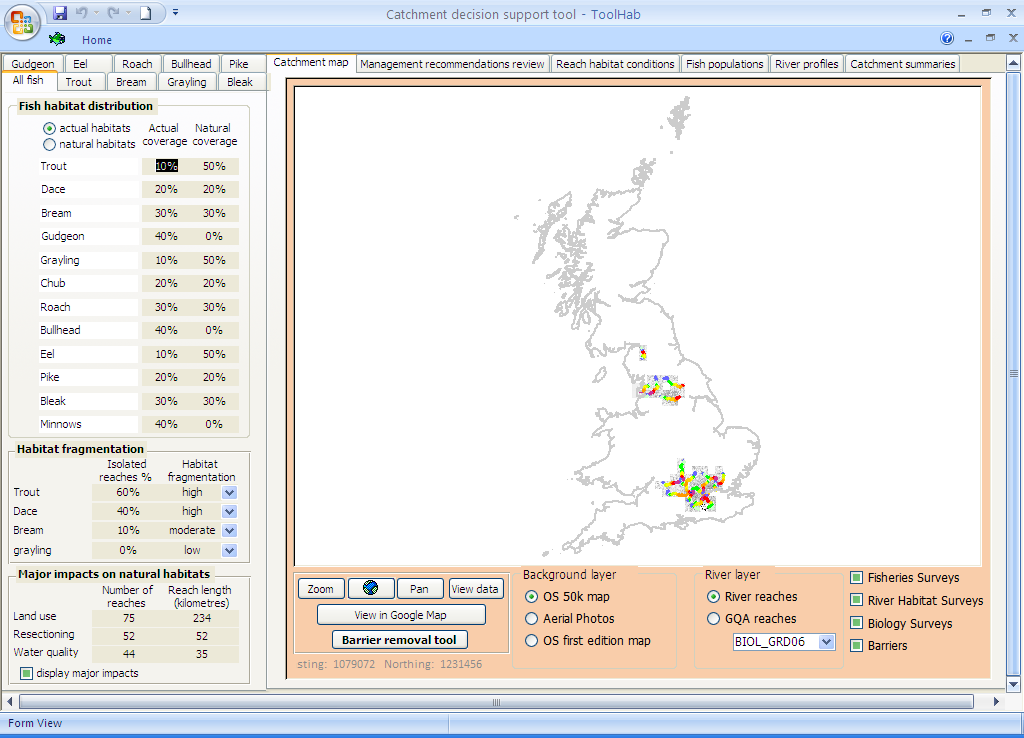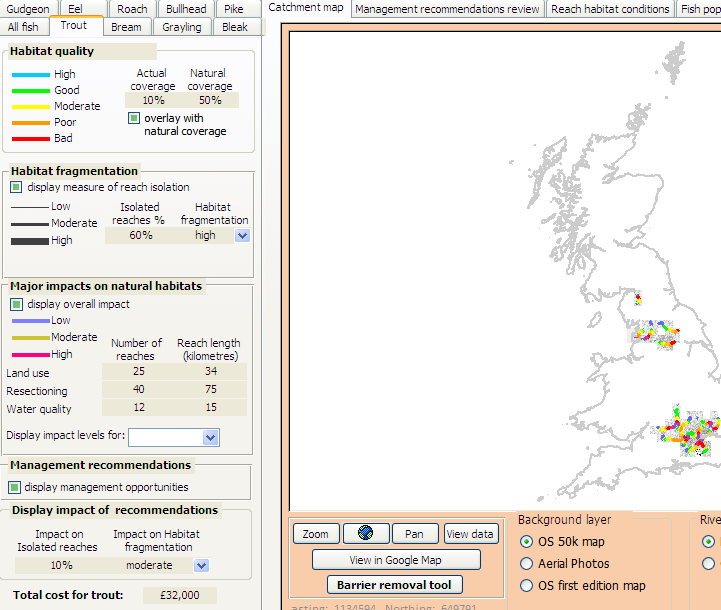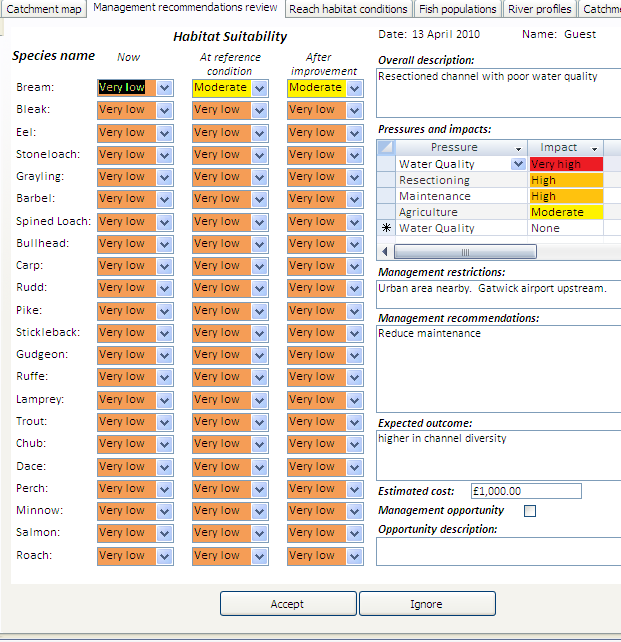Catchment Decision Support Tool
This tool provides an interface to view and summarise the reach habitat assessment information entered by catchment officers using the reach assessment tool.
The aim is to use this tools to develop strategies for improving habitats at catchment scale and prioritise sites/reaches for habitat improvement work.
The interface displays summary statistics on
- habitat suitability for fish as observed and in reference conditions;
- pressures and impacts;
- habitat fragmentation.

Summary statistics can also be viewed using maps and tables for each species by selecting the tabs with species names on the left hand side of the screen (see below example for trout).

Users can also be given access to assessment forms for individual reaches by clicking on the 'Management recommendations review' tab header.
This should help build an overall pictures of habitat quality at river/catchment scale and the pressures affecting those habitats.
For example, we may find that a particular catchment has lost habitats 50% of its habitats for trout potentially due to engineering and land use pressures.
The tool may also tell us how fragmented remaining habitats are and design a strategy for improving habitat quality and connectivity for trout at catchment scale.
To do so, users can access all the information and knowledge inputted by catchment officers and interact with them in the development of potential strategies. They can also consult existing data and modelling tools (using the 'reach habitat conditions', 'fish populations', 'river profiles' and 'catchment summaries' tab headers and view maps and photos using the map interface.
As ToolHab contains the Environment Agency Fisheries Barriers database, it should be possible to develop a tool to assess the impact of removing barriers on river connectivity. The 'Barrier removal tool' button on the interface is not functional but it illustrate the kind of analyses that could be carried out using the available data.
Altogether, this should facilitate the development of strategies based on existing knowledge (expert, local and scientific) and data.
At present the interface is not functional and is for demonstration purposes only.
